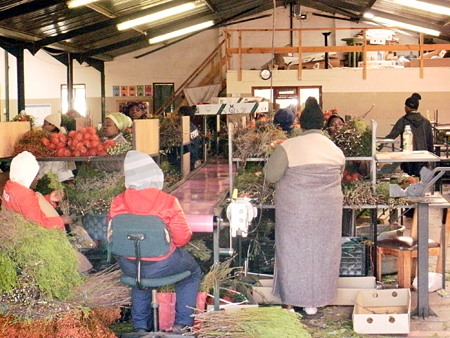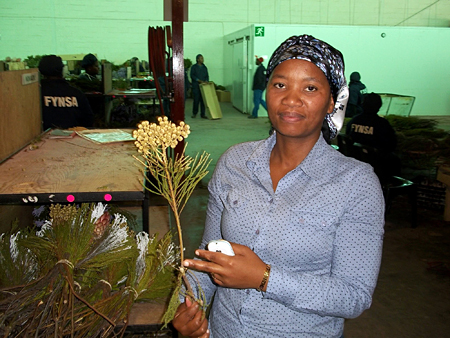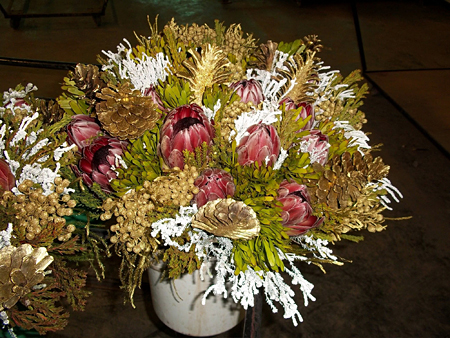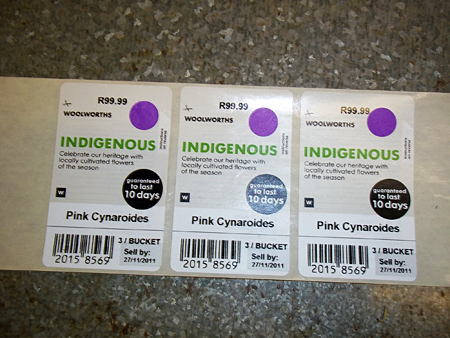Market Development and the Sustainable Harvesting Supply Chain

Market Development and the Sustainable Harvesting Supply Chain
A number of wild flower harvesting teams contain pickers who have received some level of sustainable harvesting training. These teams may participate in a number of different supply chains as there are several packsheds that handle flowers before sending them on to various markets. The first, and still the dominant, route for sustainably harvested wildflowers is via the Stanford-based Fynsa packshed. Fynsa was established as a separate private enterprise in 2003, having previously been part of the Flower Valley Conservation Trust (FVCT). Until November 2010, it was based on the Flower Valley Farm. However, expanding orders and the need for a more convenient location led to the move to a small industrial site along the main road in Stanford.

Fynsa source their wild flowers from 6 local harvesting teams, including the Flower Valley Farm, Infanta Flora, Nieuwedam Farms, Lourens Boerdery, Stanford Flora and Lomond. These suppliers pick flowers from a mix of their own land and land that they hire from landowners. Each morning Fynsa contact the suppliers and place their orders for the day, which are then delivered later that same day. Fynsa undertake a range of activities in their packshed. Some workers clean the flowers – stripping away unwanted foliage, some dye flowers, whilst others are bouquet makers who assemble the different stems into the required mix for the market. The stems are trimmed to ensure they are the correct length, after which the bouquets are packed into boxes and shipped on for transport to the appropriate market.

Fynsa’s dominant market has always been to Marks and Spencer in the United Kingdom (UK), via an agent, currently MM-UK based near Chatteris in Cambridgeshire. More recently new market opportunities have opened up for Fynsa, these have included PicknPay in the local South African market and J. Sainsbury in the UK. By December 2011, Fynsa were producing 9 different bouquet designs, up from 4 in December 2008. Total bouquet production has risen markedly year on year reaching just under 500,000 in 2011, up from 300,000 in 2008.

for the Christmas season.
Fynsa’s dominant market has always been to Marks and Spencer in the United Kingdom (UK), via an agent, currently MM-UK based near Chatteris in Cambridgeshire. More recently new market opportunities have opened up for Fynsa, these have included PicknPay in the local South African market and J. Sainsbury in the UK. By December 2011, Fynsa were producing 9 different bouquet designs, up from 4 in December 2008. Total bouquet production has risen markedly year on year reaching just under 500,000 in 2011, up from 300,000 in 2008.

Currently another Stanford-based packshed, Bergflora, is beginning to promote the sustainable harvesting concept and has started to secure some initial markets on this basis, including Woolworths in South Africa.
